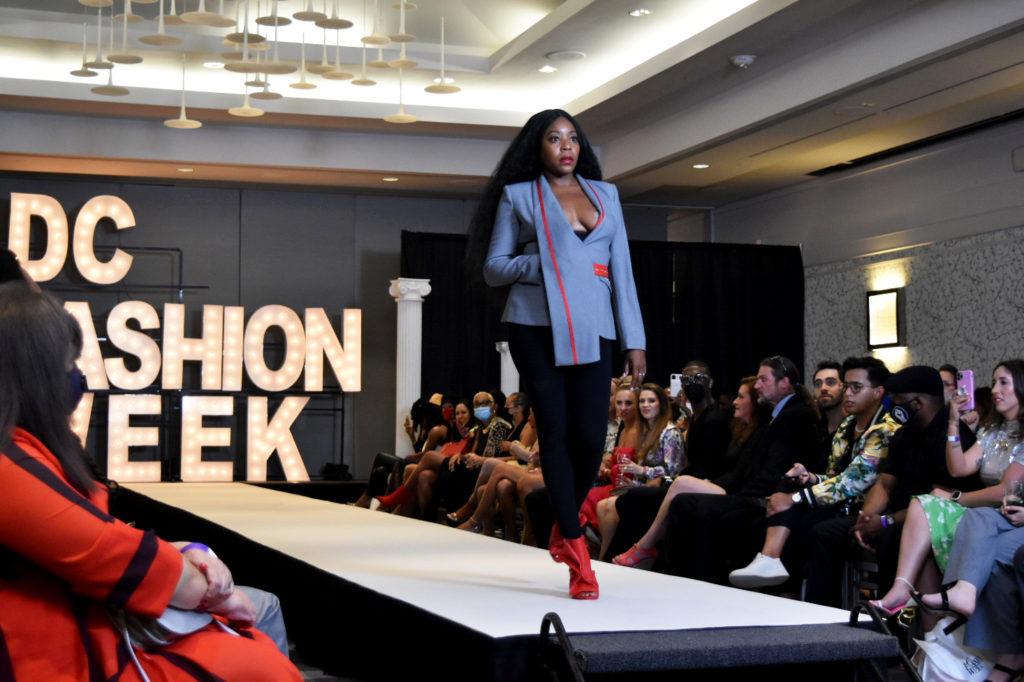The District’s fashion industry is booming with designers who draw inspiration from childhood, cultural influences and even D.C. streetwear.
We talked to local Black designers, vendors and creators about their artistry and what they think the D.C. fashion scene looks like today. From highlighting the nuances of their designs to recounting what high schoolers wore in D.C. back in the day, these designers shine light on the thriving fashion community in the District.
All of Starbille Cooper’s friends know her as “Star” and in the fashion business as “Star the Visionary” for her whimsical, fairytale inspired pieces she designs for her brand, Once Upon a Time.
Cooper said as she watches her daughter’s excitement when putting on a tutu or dressing like a princess, she is reminded of the childlike joy everyone should feel when they put on clothes.
“I want women to embrace their inner child,” Cooper said. “It’s OK if you want to dress over the top. You have to block out all of the noise around you, and you have to live life as if you’re living your own fairytale.”
Cooper said the fashion industry typically caters to a certain look: smaller people who require less fabric to design, usually from a nondiverse pool of models. But for Cooper’s brand, taking inspiration from designers like Rihanna, embracing diversity was a must.
“When I was selecting my models, I wanted to have someone of each race,” Cooper said. “I wanted to have someone of different heights, just because to me, that’s beautiful.”
Taseen Abdulbarr, or “The Grand V” as his friends call him, is the founder and designer of the luxury brand Linestrax. Abdulbarr described his garments as “artifacts,” saying his pieces are works of art that aren’t limited to the fashion industry.
Abdulbarr got his start hand-painting canvases and jackets in college and then transferred his designs to shoes, which got the attention of Nike footwear designer Lee Gibson. Abdulbarr’s brand, which he prides because of its originality, took off from there and he secured a feature in New York Fashion Week 2017.
“I’m all about being different and standing out,” Abdulbarr said. “I never wanted my stuff to look like anybody else’s.”
Abdulbarr said he’s faced challenges within the fashion industry when it came to advocating for originality. The creator noted disparities between larger brands unfairly taking designs from less-known designers, and he hopes to create a system of protection in the future.
“We want to make good money, and the difference between that is that people can make money copying off somebody or stealing,” Abdulbarr said. “But good money is making your work but also changing things in the process.”
Delight Dzansi creates African prints for her brand alkeBULAN. The Ghana-born designer recently graduated from the University of Maryland and currently works in the District in international development.
Dzansi said she created her brand because she noticed getting authentic prints from Africa proved difficult for people in her church. This was because of the logistical inaccessibility of finding someone traveling to Africa to bring them back.
Dzansi said with the creation of her brand, she has noticed a surge in people’s desire to wear African prints to represent their history and culture through fashion.
“A lot of Africans have been waking up to that and also just want to represent where they’re coming from and not shy away from it,” Dzansi said.
She said one of the first fashion shows she was invited to featured all Black designers.
“I was appreciative of trying to get minorities involved because I know we don’t get that much of a platform because if you see New York fashion, Paris fashion, you don’t really see people who look like me,” Dzansi said.
Founder of the fashion brand Generation Typo Doncel Brown started out as a graphic designer and had the idea for the brand after noticing a disconnect and prejudice between generations.
All of his designs feature a signature red line meant to represent the ‘typo’ and the labeling of people as mistakes because of differing beliefs or identity. Being able to integrate this messaging into his brand is a big part of what Brown said streetwear is about.
“Streetwear has become more so of a movement and culture, and it’s more about the messaging behind it,” Brown said. “It kind of breaks down some of these stigmas of who you are supposed to be versus who you actually are, to where you can wear whatever you want.”
Brown also said being based in the DMV area lends to his appreciation for the District’s fashion community as well as his own upbringing.
Growing up in D.C., Brown noticed luxury streetwear becoming a prominent trend in fashion as a teenager. He recalled the come-up, high-end sneakers like Jordans and everyday designer clothes.
“The kids coming in with the wildest designer clothes and Jordans,” Brown said. “That’s when I really learned the history of sneakers and really dived into the different brands of shoes.”
Brown said he is proud to be able to give back to the community with his brand in the form of clothing donations, which call back to his own childhood.
“I was in a shelter for the first 25 percent of my life and just seeing what my mom had to go through and knowing like, ‘Dang, I really want that cool jacket, but I don’t have $200, $300 to spend on it,’” Brown said. “Now we’re able to just give that, like, now I’m just gonna go out and it’s gonna be really cool.”








